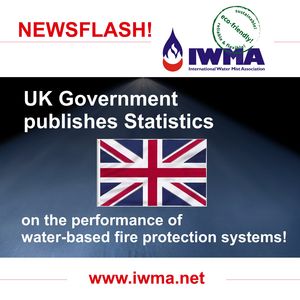Analysing over 4,000 fire incidents in England (2018–2024), the data from the UK Ministry of Housing, Communities and Local Government shows water mist systems have controlled fires in 95.3% of cases and extinguished them in 58.6%—compared to 90.7% and 27.6%, respectively, for sprinklers. In residential settings, both systems performed strongly, with near-identical extinguishment rates (around 37%) and control rates of 95.8% for mist and 91.4% for sprinklers. While extinguishment is not the primary design goal of most suppression systems — mist or sprinklers — these figures offer useful insights into their real effectiveness.

“This confirms what professionals already know—well-designed suppression systems save lives,” said Max Lakkonen, President of the International Water Mist Association (IWMA). “Water mist’s edge in performance, combined with its low water usage, makes it a powerful fire safety solution.”
Both technologies demonstrated high reliability, with system fault rates below 3% (2.9% for mist, 1.9% for sprinklers). Failures were mostly linked to fires starting outside the protected area or known faults. Systems installed in the fire’s room of origin were far more effective — underlining the importance of proper design and coverage.
IWMA is addressing reliability further through updated guidelines and training initiatives focused on installation and maintenance quality. “This is good news for the entire fire protection sector,” added Lakkonen. “Both systems work. With smarter design and better training, performance will only keep improving.”
IWMA remains committed to evidence-based fire safety and will continue supporting industry-wide improvements in system performance and standards.
Referred data is publicly available from the UK Ministry of Housing, Communities and Local Government.



